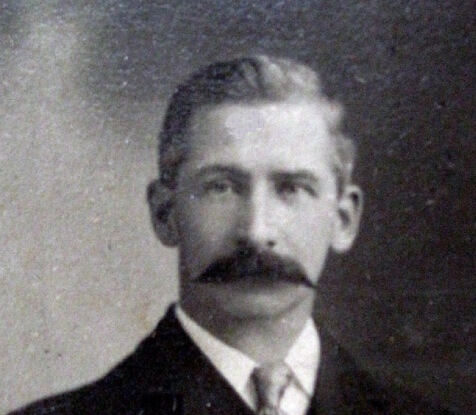
HHS members and readers probably know a lot about John Farrer and his contribution to Hornsey’s housing. He was honoured when a road was named after him. But who now remembers Edwin Lovegrove and his contribution to Hornsey’s housing, sanitation and health?
Many of us think that a fitting memorial to him would be to rename the misleadingly named Campsbourne Cottages Estate and Conservation Area, which is being reviewed and appraised by the council at the moment, as the LOVEGROVE ESTATE and CONSERVATION AREA. A consultation document from the Council on this will be available soon to which we hope members will respond.
An excellent reputation
Lovegrove was born in Hackney in 1861, one of eight children, to Martha and James – his father an engineer and surveyor. Edwin married Clara Amelia Lidstone in Hackney in 1884 and professionally followed in his father’s footsteps. He acquired an excellent reputation for his housing schemes – a very early public housing scheme of his in Richmond caught the attention of Hornsey Urban District Council (UDC) in 1896. They employed him as engineer and surveyor to develop a public housing scheme they wanted to build to improve the living conditions of Hornsey’s working classes.
In 1897 the building of the cottages at the north end of Nightingale Lane and into what became South View and North View Roads was begun. These were high quality houses to meet Lovegrove’s vision that public housing should be of good quality design, have privacy (“no less than others expect”), have their own bath and WC, and outside space front and back.
The cottages were advertised and allocated to ‘working class residents of Hornsey or having employment in the borough’. So grew the need for more such housing that phase 2 of the development was built in 1904, 140 more cottages in the roads that became Beechwood and Hawthorn.
An innovative decision
Between 1899 and 1901 Hornsey UDC and Lovegrove had built similar cottages in Highgate off North Hill (Kenwood Road). Hornsey’s decision to build public housing was innovative, there was no legal requirement to do so, and it was only the fourth of such schemes in the country.
Later Lovegrove went on to develop new types of machinery and practices at the Hornsey Dust Destructor for the recycling of waste materials and overall he contributed in many ways to the improvement of our borough.
In 1909 he was made a Freeman of the City of London and died in Hove in July 1948.
Further reading
- John Hinshelwood’s series of articles on housing the working classes in HHS annual Bulletins No 41 (2000), No 42 (2001) and No 44 (2003) and Bulletin No. 56 (2015)
- Smithfield-Square’s Fascinating Past Part Two by Janet Owen
- The Campsbourne Cottage Estate by Ray Rogers